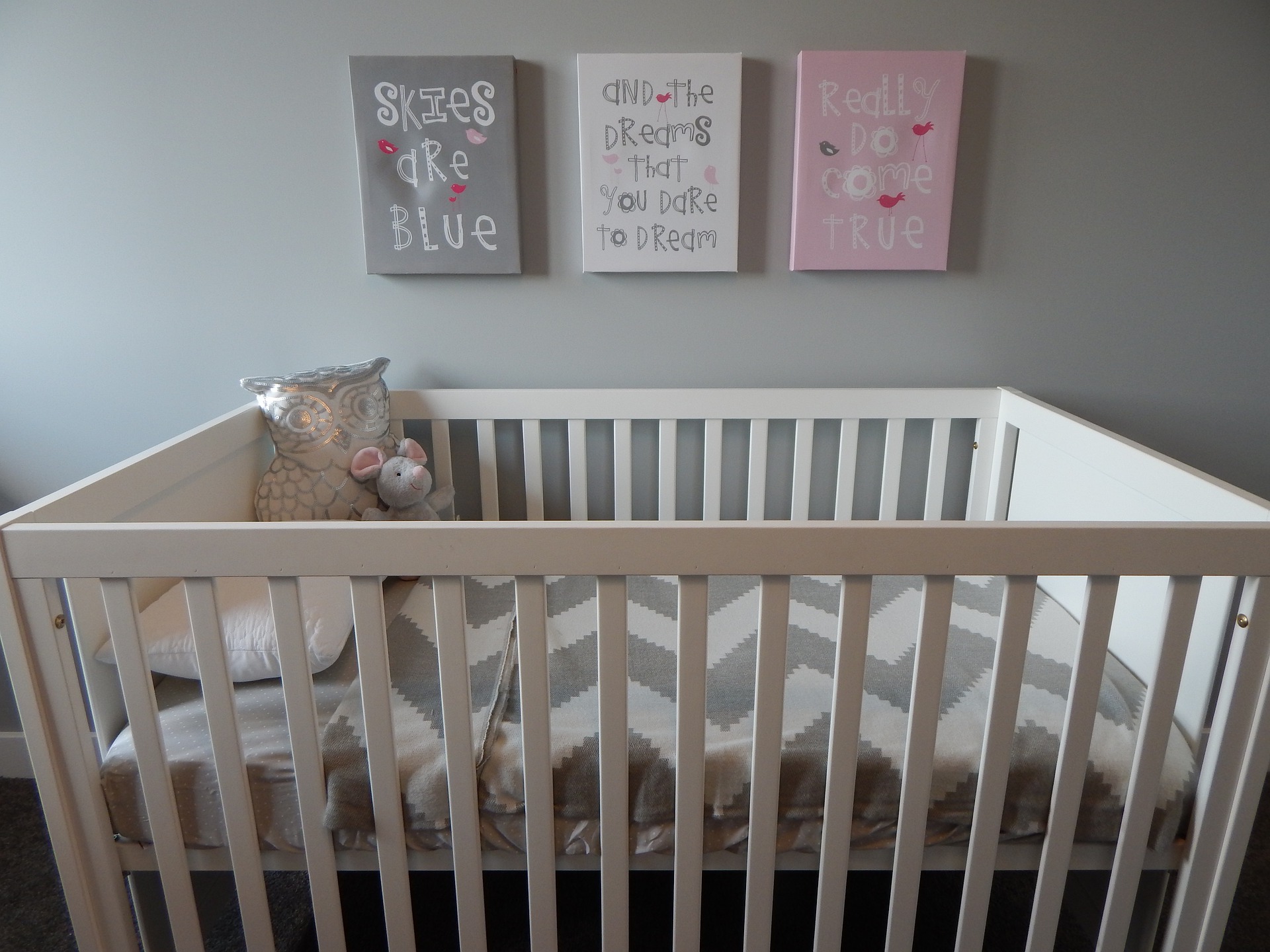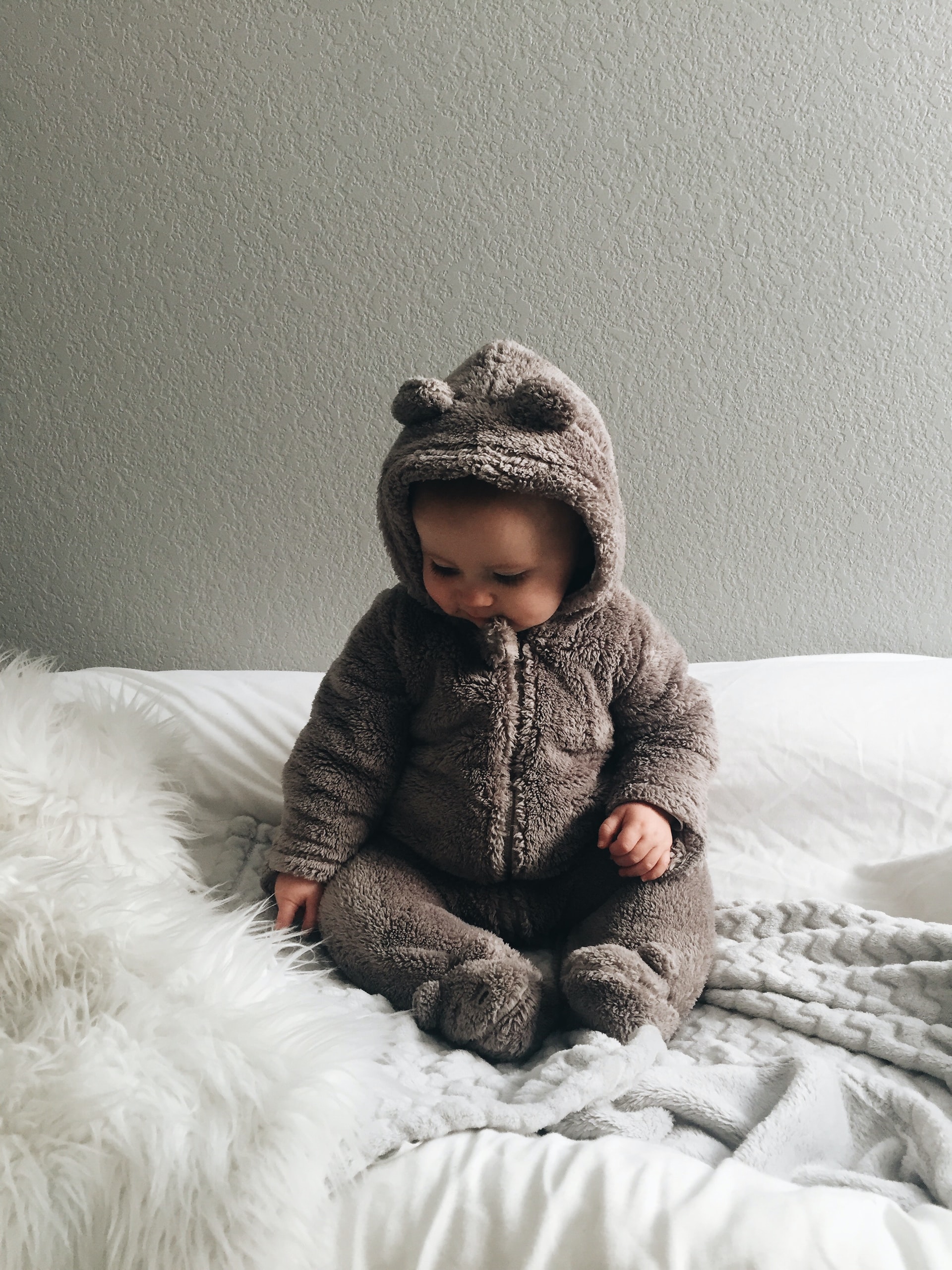Sleep training is a technique most mothers apply to help their babies sleep well while attaining physical and mental development as they grow. I wish I had this kind of advice when I was a new parent!
But like many moms, you might be skeptical about sleep training because that leaves your baby alone in its crib until it tires out and slumps to sleep. And that might sound a bit cruel, right?
Actually, it’s not; sleep training has long-term efficiency. As your little one’s growing, sleep training (after 4 months of age) should get rid of restlessness and sleep fights significantly in your junior.
So, how do you sleep train your baby for naps? We’re going to share it in this article along with what to expect and its benefits. Stay put and read on.
Table of Contents
- What Is Sleep Training and How Does It Work?
- What’s the Proper Age for a Baby for Sleep Training?
- Things to Tackle Before Sleep Training Your Baby
- How to Sleep Train Your Baby for Naps: 7 Best Tips From Sharon
- 5 Benefits of Sleep Training You Can Expect
- What If the Sleep Training Doesn’t Get the Results?
- Sharon’s Conclusion
What Is Sleep Training and How Does It Work?
Sleep training is applicable for those kids that struggle to have a sound sleep even after being exhausted after a long playtime. While typically, it’s a sleep regression in kids at their growing ages, other triggers might be responsible for obstructing their sleep.
Whatever the cause, the 6-month, 8-month, or 12-15-month sleep regression actually frustrates the moms and caregivers as they find it nearly impossible to make the babies sleep.
And even if they succeed in doing so, the babies will wake up out of blue, making the whole effort useless. After all, 9-12 hours of daily sleep is essential for babies on top of their daily naps.
Here, sleep training comes as a practical solution for moms and caregivers, sparing them the pain of trying the little mischief-makers into sleep.
Sleep training, in its essence, is a way to lure babies naturally into a regular sleep schedule. But it doesn’t involve your baby’s endless hours of lone cries in the crib. Instead, sleep training teaches babies to get back to sleep on their own if they ever wake up in the middle of their nighttime sleep.
So, even if it might get tough to get your baby used to the sleep training initially, the long-term impact should outweigh the struggles.
What’s the Proper Age for a Baby for Sleep Training?
Your baby should be at least four or above before you try the sleep training. Babies should get around the circadian rhythm developed within their system as they start the training. The Circadian rhythm helps the babies sleep through the night, supporting the training to be more effective.
Age four is also a good time for babies to learn to sleep on their own. During this time, they learn how to get used to their bed while getting enough sleep without much effort from their moms or caregivers.
But not all babies have to be confined to that age level for sleep training.
Some babies may show positive results if you start to sleep train them when they’re about six to nine months. Many parents find ‘nine months’ to be an ideal time to sleep train their babies since they no longer require feeding at night.
Although determining the proper age is sometimes difficult, rest assured, your little pie will learn to sleep on its own, sooner or later. However, you must try to regularize your child’s sleep pattern as a responsible parent. It might benefit both your kid and yourself.
Things to Tackle Before Sleep Training Your Baby
It’s true that you must start soon to sleep train your baby, but it in no way suggests that you have to rush your kid into it. You must prepare your kid before going into the course.
In this section, we’ll share the things to tackle before sleep training your baby. Let’s find out what those are:
- Check Your Baby’s Sleepy Cue
What are sleepy cues? Sleepy cues are actually the signs that your baby shows when it’s exhausted or tired. Your kid might rub its eyes, yawn now and then, and stay in a stupor for a while, after waking up from a nap about two to three hours ago. And these signs will continue to show up until it goes back to napping and wakes up again.
These signs might vary during four months, six months, nine months, or in toddlers who’re around fifteen months or above.
Therefore, you must utilize these cues to figure out the right age and time to sleep train your baby.
- Ensure a Sound Sleep for Your Baby at Night
As you’re getting your baby’s sleep cues onboard to prepare for sleep training, focus on the nighttime sleep as well.
Nighttime sleep is undoubtedly the most important and longest sleep duration for a baby. So, waking up too early or in the middle of sleep may spoil the daily sleep pattern as a whole.
So, make sure your kid is sleeping through the night by keeping the surroundings as comfortable as possible. Try the following:
- Keep the room dark and warm.
- Check the diaper and bedsheet, and change them if they’re wet or dirty.
- Ensure a sleep crutch; whatever works for your baby, such as holding its small hand, breastfeeding or bottle-feeding, rocking, or keeping it against your chest.
Sleeping through the night will be an inseparable part of your training since a well-slept baby can focus sufficiently on its daily playtime, meals, and daytime naps and activities.
How to Sleep Train Your Baby for Naps: 7 Best Tips From Sharon
Our article will be insufficient without the tips for sleep training your baby.
Getting tipped off with some practical ways will make the learning fruitful for both you and your little sweetie.
So, here are the seven best tips to sleep train your baby with the intention of getting the most out of it:
- Look for Your Baby’s Sleepy Cue
Picking the sleepy cues of your baby can give you an idea about the sleep training schedule. The eye rubs, a little crankiness, yawns, or absent-mindedness are the cues to slowly get your junior to sleep.
Making this a good practice will help you gradually involve the baby in training.
- Try to Stay Active between Nap Times
Active playtime is a prerequisite for sound sleep. It’s true for both children and adults. Getting a playtime scheduler may help keep to a good routine. Every parent needs a few minutes to themselves, and having a tight schedule will help.
However, when you’re focusing on sleep training your kid, you must ensure your little one is having a blast during playtime, ensued by a tired-out body-craving sleep.
- Make It’s Sleeping Zone Cozy
Don’t force your kid to sleep in a room that’s flooded with light. Also, make sure it’s not wearing any damp diapers or underwear. Its clothes should be soft and cozy depending on the season.
Furthermore, don’t overlook the fact of feeding your little one enough for the night. A partially full or empty stomach will kick now and then, making your kid wide awake.
- Don’t Push, Rather Let Your Baby Sleep Voluntarily
If your baby’s squirming or playing around when it’s supposed to sleep, don’t force it to sleep. Don’t even react if it’s crying its heart out for no specific reason. Many parents lose nerve while shouting or telling off their little kids.
The right way to deal with this situation is to let your baby pass the time in its way, play along with him or her, and slowly your baby will get tired and hit the sack.
- Set the Night Mode in It’s Room When Sleepy
No matter at which time you’re putting your baby to sleep, keep the ambiance right.
Your baby will sleep more comfortably in a darker room than in flashy lights all around. Besides, try to keep the surroundings quiet.
- Understand Her Cries
Babies are fussy, and they’ll fuss more when it’s time to sleep. But it shouldn’t allow you to overlook each and every cry of your honey.
If your baby’s hurt, it won’t be able to fall asleep without being treated and pampered. So, rush to your kid if you notice anything amiss in its crying notes.
- Maintain a Nap Schedule
It’s important to habituate your kid to a daily sleep and nap schedule while sleep training. Choose the times that are quiet during the day for naps and follow the same times daily. Also, get your kid to the crib or bassinet around the same time before nighttime sleep.
5 Benefits of Sleep Training You Can Expect
Sound and regular sleep are essential for your baby for its natural growth and mental development. That’s why sleep training is essential to maintain a proper sleep schedule.
Below, we’ve enlisted five crucial benefits your baby can achieve by sleep training:
- More Sound Sleep
Sleep training helps kids to self-soothe themselves, meaning they can go back to sleep once they’re awake in the middle of the night, much to the moms’ relief. Thus, this binds the baby to a sound and regular sleep pattern.
- Night Sleeps with Less Interruption
Sleep training includes daytime naps, which help children get used to it gradually. As a result, babies can sleep with less anxiety at night. There’s a misconception that kids sleep better at night after a busy day without sleep.
In fact, the opposite is true. Little kids around four to nine months need at least two to three naps during the daytime. And it keeps their mood fresh while freeing their body from anxiety; hence falling asleep quickly and sleeping the whole night up without much interruption.
- Better Health for the Baby and Parents
Sound sleep is mandatory for babies to absorb the stresses and tiredness they get throughout the day. It also helps them achieve neurological development, better immunity, and a well-functioning heart.
Here, sleep training will help your baby get that required amount of sleep within the 24-hour period to attain those benefits in the long run.
However, the training can also benefit parents and caregivers. It helps them build a better understanding of their babies’ sleep patterns and requirements while ensuring better moods and health for themselves.
- Brain Booster
As said before, sound nighttime sleep can improve babies’ brain function. Studies report that sound sleep during nighttime followed by daytime naps can enhance the word power and expressiveness in kids.
- Better Mood and Playfulness
Since sleep training helps achieve a sound sleep pattern, babies can release and revitalize their brains and mood through sleep. It helps them acquire a stress-free mindset, enabling them to gleefully interact with their parents and caregivers.
What If the Sleep Training Doesn’t Get the Results?
Sleep training may fail to get the optimum result under various circumstances. But you can alter the result and help your child get better sleep within a 24-hour period.
A few reasons for the training not working are sleeping clothes discomfort, unsuitable sleeping room, empty stomach, damp or wet diapers, etc.
We’ve mentioned before that your baby must be prepared in order for you to apply sleep training. Without removing the odds, you won’t be able to get positive results.
So, check if:
- your baby isn’t getting proper naps throughout the daytime
- it’s too stressed
- it has slept too much during the daytime naps
- the naps were too close to the nighttime sleep
Try to improve the baby’s surroundings and sleep patterns to get the right amount of sleep at night. Or else, let your baby sleep as it pleases since many kids learn with time how to attain a better sleep pattern.
Sharon’s Conclusion
So, this is what sleep training is all about, and you must take it seriously. But at the same time, we would advise you not to be hard on your kid about it.
Kids have varied sleep patterns depending on their age, health condition, gender, and surroundings. So, be kind and careful with your sweetie pie as you’re trying to teach it such an important skill.











